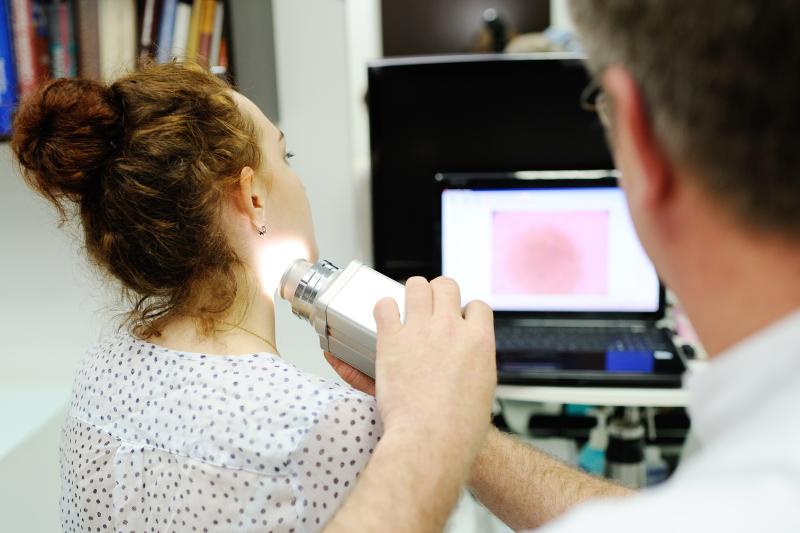
Adherence to current surveillance guidelines, such as routine skin examination and photoprotection recommendations, is essential among survivors of haematopoietic cell transplantation (HCT) at highest risk for the development of cutaneous melanoma, suggests a recent study.
The investigators determined the risk factors for melanoma following allogeneic HCT by performing a nested case-control study of 140 melanoma patients and 557 controls (matched by age at HCT, sex, primary disease, and survival time) through the Center for International Blood and Marrow Transplant Research.
The risk of melanoma was significantly elevated among HCT survivors who received total body irradiation-based myeloablative conditioning (multivariable-adjusted odds ratio [OR], 1.77, 95 percent confidence interval [CI], 1.00–3.15) or reduced-intensity conditioning containing melphalan (OR, 2.60, 95 percent CI, 1.13–6.02) or fludarabine (OR, 2.72, 95 percent CI, 1.02–7.30) compared with busulfan-based myeloablative regimens.
Melanoma risk was also increased among HCT survivors who were diagnosed with acute graft-versus-host disease (GVHD) with stage 2+ skin involvement (OR, 1.92, 95 percent CI, 1.19–3.10), chronic GVHD without skin involvement (OR, 1.91, 95 percent CI, 1.03–3.57), or keratinocytic carcinoma (OR, 2.37, 95 percent CI, 1.16–4.83), as well as those residing in areas with higher ambient ultraviolet radiation (tertile 3 OR, 1.64, 95 percent CI, 1.01–2.67).
This study was limited by the lack of data on individual-level ultraviolet radiation exposure and clinical data on melanoma characteristics, according to the investigators, adding that misclassification of melanoma was possible since not all pathology reports were available for review.